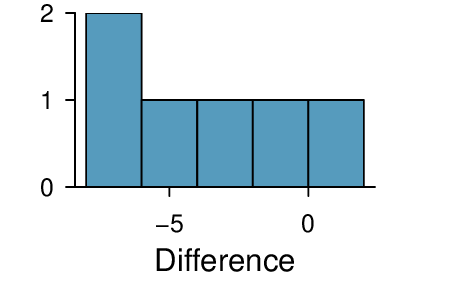1. Gaming and distracted eating, Part I.
A group of researchers are interested in the possible effects of distracting stimuli during eating, such as an increase or decrease in the amount of food consumption. To test this hypothesis, they monitored food intake for a group of 44 patients who were randomized into two equal groups. The treatment group ate lunch while playing solitaire, and the control group ate lunch without any added distractions. Patients in the treatment group ate 52.1 grams of biscuits, with a standard deviation of 45.1 grams, and patients in the control group ate 27.1 grams of biscuits, with a standard deviation of 26.4 grams. Do these data provide convincing evidence that the average food intake (measured in amount of biscuits consumed) is different for the patients in the treatment group? Assume that conditions for inference are satisfied.
1
R.E. Oldham-Cooper et al. “Playing a computer game during lunch affects fullness, memory for lunch, and later snack intake”. In: The American Journal of Clinical Nutrition 93.2 (2011), p. 308.
Solution.
\(H_{0} : \mu_{T} = \mu_{C}\text{.}\) \(H_{A} : \mu_{T} \ne \mu_{C}\text{.}\) \(T = 2.24\text{,}\) \(df = 21 \rightarrow \text{p-value } = 0.036\text{.}\) Since \(\text{p-value } < 0.05\text{,}\) reject \(H_{0}\text{.}\) The data provide strong evidence that the average food consumption by the patients in the treatment and control groups are different. Furthermore, the data indicate patients in the distracted eating (treatment) group consume more food than patients in the control group.






